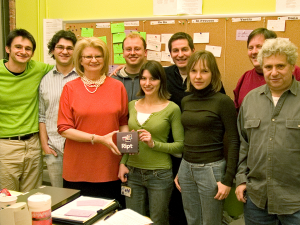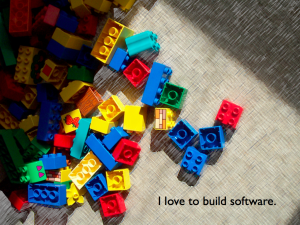 I presented my paper “Agile Values, Innovation, and the Shortage of Women Developers” at the Hawaii International Conference on System Sciences #45 (HICSS) on Thursday, January 5th. I’ll publish out my presentation notes in this blog over the next week. I’ll also link to the published paper when it is available on the IEEE website.
I presented my paper “Agile Values, Innovation, and the Shortage of Women Developers” at the Hawaii International Conference on System Sciences #45 (HICSS) on Thursday, January 5th. I’ll publish out my presentation notes in this blog over the next week. I’ll also link to the published paper when it is available on the IEEE website.
A puzzling experience
I’ve presented papers at HICSS before. Mostly in the Agile track chaired by Jeff Sutherland. I did present once in a more purely academic Ethics track.
In this case, HICSS had two “Agile” tracks. And the one I submitted to was actually not Jeff’s track. Kind of amusing. But also kind of NOT as the real reward of this conference has been the mix of educators and practitioners. By having two tracks, HICSS split the audience. I was in an academic track with an academic audience.
I am a digression
As the whole topic of Agile is a minor footnote at this conference, I found myself an outlier to the outliers. Or as the chair of my mini-track at this conference called my paper, “a digression”.
I will admit it. My paper is a digression. It was off topic here. It would be off topic at a professional Agile conference. That doesn’t make it irrelevant and I’m grateful for the reviewers who allowed it into the conference and the people who attended my talk.
It is about what our industry and our peers do to discourage and drive away women from software development and how Agile values can help practitioners find the courage and focus to fight this. Like I said, I’ll start publishing out my notes this week.
Just another process
I should have realized I wasn’t proposing into Jeff’s mini-track just based on the title: “Agile Software Engineering“.
Just the use of the word Engineering will inflame the passions of many very good Agile practitioners. I am not one of them. I understand “craftsperson” and “engineer” are freighted concepts. But I am the son of an Engineer and spent over ten years working in theater while becoming a paid software developer. I know that both terms imply a love of disciplined execution, a dedication to excellence, a sense of personal responsibility, and a society of peers.
However, in this case the phrase Agile Software Engineering spoke to an overall tone of the day I’d summarize as, “Really, agile isn’t so different from everything else. It’s just a process framework. Just some practices that apply in some cases and don’t apply in others. A good developer will do good work in spite of the process they use.”
The heart of my concern
This is entirely true if you focus on the practices but this characterization of the Agile movement gets to the heart of my concerns about widespread Agile adoption. Agile adoption isn’t about the practices. It’s about the principles behind the practices.
If you don’t have those values instilled into your team and aren’t working incrementally to install those values into your organization. You can call yourself agile but don’t characterize your understanding of what that means as the sum total of what Agile practice represents.
I don’t claim “Agile” is the one answer
It is clearly possible to build a team oriented, collaborative organization without calling your values, Agile.
It is also possible to get through life without wanting to work on a team or to collaborate with anyone. Not every software professional can or wants to embrace these values or would be successful if they tried. And you can build decent software in such a work place.
I also know there are now a plethora of shops that promote their “agile” process that wouldn’t acknowledge an Agile principle if it stood in front of them naked. They don’t give a rat’s ass about their coders — they consider team formation an org chart decision and wouldn’t tolerate self-organization for a second.
My path
But I know after years of hard won experience that Agile principles are my path to an empowered, humane workplace capable of producing work I am proud of that delivers for the business and addresses the needs of end users without exploiting and disposing of talented individual contributors along the way.
So, yes, some agile practices may be a prescription that can be applied selectively. But “Agile” as in the set of values I go to work with each day and come home with each night? That is me. Not my toolbox.


 Dear consultant who uses “agile” as part of your brand,
Dear consultant who uses “agile” as part of your brand, I presented my paper “Agile Values, Innovation, and the Shortage of Women Developers” at the
I presented my paper “Agile Values, Innovation, and the Shortage of Women Developers” at the  This demand gives you an angel on your shoulder. Watching you as you work. It inspires even as it shames you into substantial actions that go against your nature. And you do this because your team needs you to.
This demand gives you an angel on your shoulder. Watching you as you work. It inspires even as it shames you into substantial actions that go against your nature. And you do this because your team needs you to.
 But the reward is that you get to be the same person with your boss that you are with your peers that you are with your staff.
But the reward is that you get to be the same person with your boss that you are with your peers that you are with your staff.
